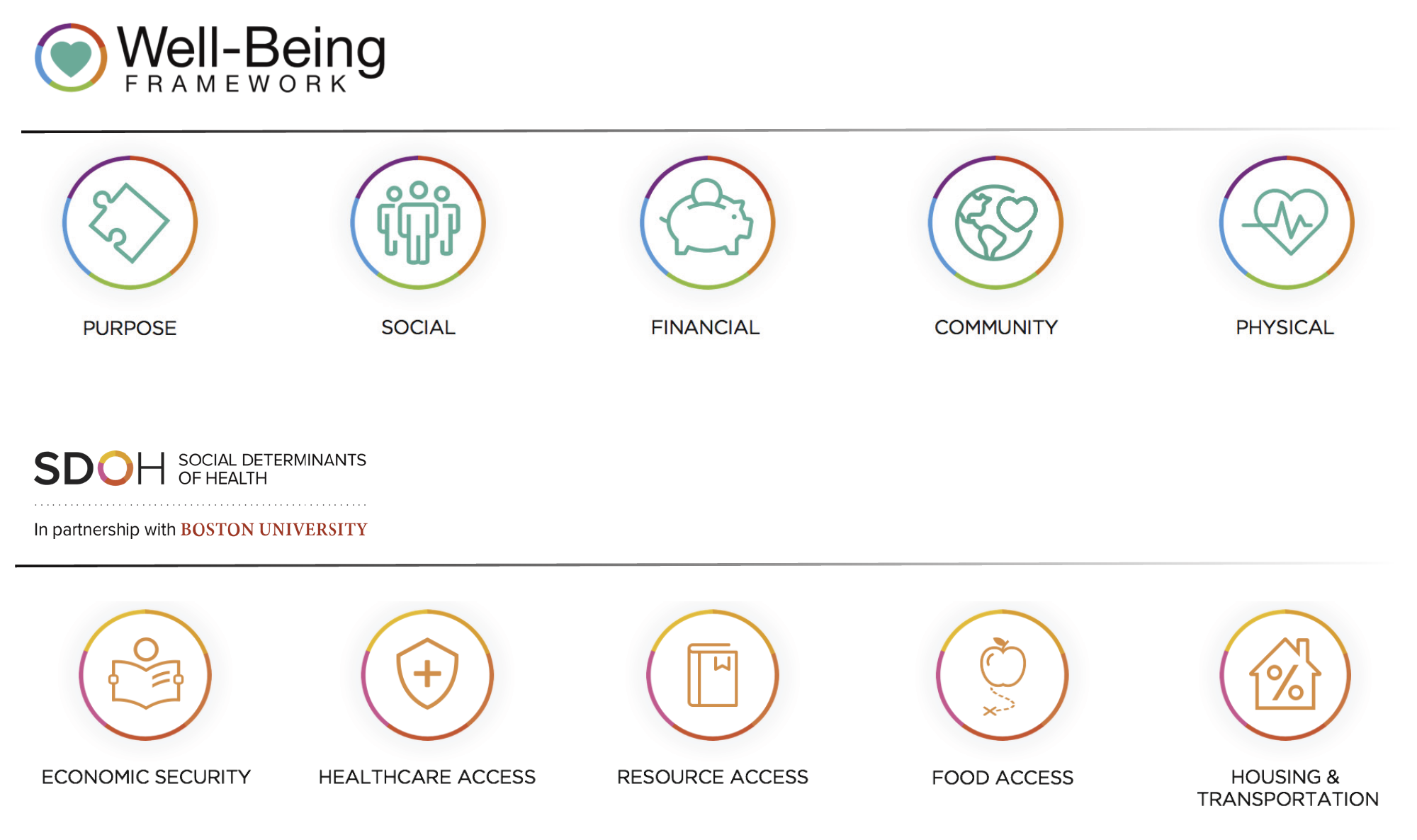A unified approach in community well-being
The Community Well-Being Index (CWBI) combines individual risk derived from the Well-Being Index (WBI) with community risk from the Social Determinants Health Index (SDOHi) to create a single composite measure that defines our collective health risk and opportunities.
The CWBI offers a comprehensive view of well-being across states and communities, from a sample that projects to an estimated 95 percent of American adults, allowing us to identify populations where we can have the greatest influence. It also provides a framework against which we can measure well-being improvement, giving us the ability to see the impact and progress of our work in these areas over time.
For employers, health plans, health systems, and community leaders, this holistic view of health provides the framework for understanding the underlying root causes of poor health, enabling Blue Zones Project interventions that make the healthy choice the easy choice. Our data and insights on well-being inform more effective strategies that encourage the sustained lifestyle changes necessary for people to thrive and perform to their highest potential.
The CWBI is updated as well-being data is collected across the country and as new SDOH datasets are released. The real-time nature of the CWBI allows employers, health plans, health systems, and community leaders to make decisions with the most up-to-date data available on the state of their community.
Learn more.


.jpg?width=1200&height=809&name=BlueZonesProjectOregonNew_0004%20(3).jpg)



